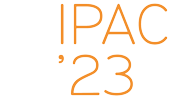Speaker
Description
Cavity based X-ray free-electron lasers (CBXFEL) are next generation X-ray sources promising radiation with full three-dimensional coherence, nearly constant pulse to pulse stability and more than an order of magnitude higher spectral flux compared to SASE FELs. However, especially for the low gain X-ray free-electron laser oscillator (XFELO), the outcoupling of the radiation stored inside the cavity remains an issue, as only small outcoupling coefficients are tolerable.
In this contribution, a scheme is proposed which exploits the polarization dependence of the crystal based X-ray diffraction, which poses the main reflection mechanism for forming the X-ray cavity. Especially for reflections close to a 45° Bragg-angle, as is proposed for the proof of concept experiment at the Linac Coherent Light Source (LCLS) at the Stanford Linear Accelerator (SLAC)"*", the polarization dependence of the reflection coefficient becomes very strong. By properly setting up the polarization of the FEL radiation with respect to the reflection direction, a very simple, yet potent and tunable outcoupling mechanism can be realized.
Footnotes
"*" K.-J. Kim et al., “Test of an X-ray Cavity using Double-Bunches from the LCLS Cu-Linac,” Proceedings of the 10th Int. Particle Accelerator Conf., vol. IPAC2019, p. Australia, 2019
| I have read and accept the Privacy Policy Statement | Yes |
|---|

